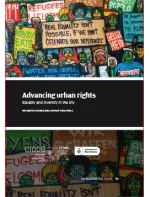Amman, a welcoming city for migrants and refugees

Amman is Jordan’s capital and most populous city, as well as its economic, political and cultural centre. Jordan is at the centre of the Middle East region, and has a long history of migration, acting as both a vertical and horizontal corridor for migration throughout the region. This is due in no small part to the country’s stability and security, which have served not only the Jordanian people, but all others who have sought a safe haven there from other countries in the region. Since its creation, Jordan has received three major influxes of refugees. Of the Palestinian refugees registered by the United Nations Relief and Works Agency (UNRWA) in the region, 42% live in Jordan. The 450,000refugees in 1948, followed by 240,000 in 1967, are now dispersed across the cities and in the 13 official refugee camps served by the UNRWA. The Iraqi refugee population, driven from home since early 1990s as a result of economic and political conflicts, varied between 500,000 in 2008 and 54,586 once the fighting between civilians stopped and large numbers of Iraqis were sent back to their country in 2010. UN humanitarian relief records show that as of February 2017, 61,405 Iraqis are registered with UNHCR in Jordan.